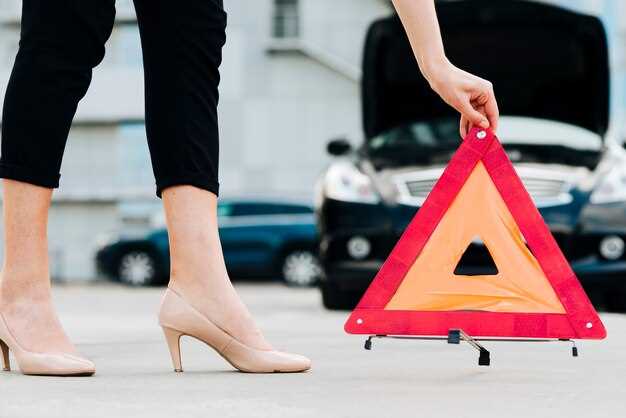
Car accidents can be distressing and chaotic events, leaving those involved feeling disoriented and uncertain about what to do next. It is crucial to remain calm and follow a systematic approach to ensure safety and protect your legal rights. Knowing the steps to take immediately after a collision can make a significant difference in the outcome of the situation.
First and foremost, safety is the top priority. After ensuring that everyone is out of harm’s way, it is essential to assess the situation and check for injuries. If anyone is injured, it is necessary to call for medical assistance immediately. Once the safety of individuals is confirmed, the next steps involve documenting the scene and exchanging information with other parties involved in the accident.
In addition to gathering information, understanding your legal rights and responsibilities is vital. This includes notifying your insurance company about the incident and knowing how to navigate potential claims. By being informed and prepared, you can manage the aftermath of a car accident more effectively, minimizing stress and ensuring a smoother recovery process.
Ensure Safety and Assess the Situation
Immediately after a car accident, the primary concern should be safety. First, check yourself and any passengers for injuries. If anyone is hurt, call emergency services right away. If the accident is minor and all parties are safe, move your vehicle to a safe location, away from traffic, if possible. Turn on your hazard lights to alert other drivers.
Next, assess the situation carefully. Evaluate the extent of the damage to your vehicle and others involved in the accident. Determine if there are any injuries among all parties involved. It’s important to remain calm and avoid escalating tensions. If safe, take photographs of the accident scene, vehicle damages, and any relevant traffic signs or signals.
To streamline the process of assessment and documentation, consider the following table of essential steps:
| Action | Description |
|---|---|
| Check for Injuries | Assess yourself and others for any injuries. Call for medical help if needed. |
| Move Vehicles | If safe, relocate vehicles to prevent further accidents and ensure safety. |
| Turn on Hazard Lights | Activate your hazard lights to alert other drivers about the accident. |
| Document the Scene | Take photos of damages, road conditions, and identify weather factors that may have contributed. |
| Exchange Information | Collect names, phone numbers, insurance information, and vehicle details from all parties involved. |
Following these steps ensures that you prioritize safety and gather crucial information that may be needed later for insurance claims or legal purposes. Always remember to remain respectful and calm when interacting with other parties involved.
Call Emergency Services and Report the Accident

After ensuring your safety and the safety of other parties involved, the next critical step is to call emergency services. Prompt reporting of the accident can help secure the scene and facilitate necessary assistance.
Follow these steps when contacting emergency services:
- Choose the Right Number: Dial the emergency services number relevant to your location (e.g., 911 in the United States).
- Provide Critical Information: Clearly explain the situation. Include the following details:
- Your location, including street names and landmarks.
- The number of vehicles involved and any visible injuries.
- Any hazards present, such as fire, leaking fuel, or obstructed roads.
- Stay Calm: Maintain your composure while speaking with the operator. They will guide you through the process.
- Answer Questions: Be prepared to answer any questions the operator may ask to ascertain the urgency of the situation.
Once you have made the call, remain at the scene until help arrives, unless it’s unsafe to do so. Not only is it vital for your safety, but remaining helps provide necessary information to authorities such as police officers and paramedics.
After reporting the incident, notify your insurance company and provide them with the police report number when available. This documentation is valuable for processing claims and determining liability.
Document the Scene with Photos and Notes
After ensuring safety and exchanging information, it is crucial to document the scene of the car accident thoroughly. Photographs and notes can serve as vital evidence when dealing with insurance claims or legal proceedings.
1. Take Clear Photos: Capture multiple images from different angles. Include wide shots that show the overall scene, as well as close-ups of vehicle damage, skid marks, and relevant road signs. Make sure to photograph any pertinent environmental conditions, such as weather or road hazards.
2. Note Key Details: In addition to photos, take detailed notes about the accident. Document the time, date, and location of the incident. Write down the names and contact information of all parties involved, including witnesses. If law enforcement is on the scene, note their badge numbers and report number.
3. Record Statements: If possible, record any statements made by the other driver(s) or witnesses at the scene. These verbal accounts can provide context and clarification about the circumstances surrounding the accident.
4. Use a Notepad or Mobile Device: Keep a small notepad or use a mobile device to jot down observations immediately after the accident. Document any immediate thoughts regarding the incident, as details may fade over time.
5. Organize Your Documentation: Once you’ve collected all photos and notes, organize them systematically. This will make it easier to present to your insurance company or legal representatives when needed. Consider creating a digital folder to store your documentation for easy access and backup.
By meticulously documenting the scene with photographs and notes, you establish a comprehensive account of the incident, which can significantly influence the outcomes of any post-accident processes.
Exchange Information with Other Involved Parties
After a car accident, it is crucial to exchange information with the other drivers and parties involved. This step helps ensure that all necessary details for insurance claims and potential legal action are documented accurately.
Start by obtaining the full name, address, and contact information of each driver at the scene. Additionally, record their insurance company name, policy number, and the vehicle registration details, including make, model, and license plate number.
It is also beneficial to collect information from any witnesses present. Ask for their names and contact information, as their accounts may support your version of events in case of disputes.
In some instances, exchanging phone numbers can be advantageous, as it allows for quick follow-up if needed. Make sure not to discuss fault or blame at the scene; keep the conversation focused on gathering the necessary information.
Additionally, take note of the time and location of the accident, as well as any other relevant details like road conditions or weather. Documenting this information can prove invaluable later.
Retaining a copy of all exchanged information is essential for your records. Consider using your smartphone to take pictures of documents exchanged and damage to vehicles for a visual record, which can be beneficial for your insurance claim.
Contact Your Insurance Company to Report the Incident
After ensuring everyone’s safety and collecting necessary details from the accident scene, your next step is to contact your insurance company to report the incident. This is a crucial process that initiates your claim and helps safeguard your rights and interests.
When you reach out to your insurer, provide them with all relevant information, including the date, time, and location of the accident, as well as the contact information of the other party involved. Be prepared to give details about the circumstances, such as how the accident occurred and any police report numbers if applicable.
It’s essential to notify your insurance company as soon as possible, as many policies require prompt reporting of incidents. Delaying this process can lead to complications or even denial of your claim. Expect to answer several questions during the call, which may include inquiries about injuries sustained, property damage, and eyewitness accounts.
Ask your insurance representative about the next steps in the claims process, including any necessary documentation you will need to provide. This can often include photos of the accident scene, estimates for vehicle repairs, and medical bills if applicable. Keep a record of all communications with your insurer, including dates, times, and the names of individuals you spoke with.
Finally, remember that insurance representatives are there to assist you, but it’s important to be cautious and not admit fault during your conversation. Stick to the facts and allow the insurance adjusters to evaluate the situation accordingly. This will facilitate a smoother claims process and help ensure that you receive the compensation you are entitled to.
Seek Legal Advice if Necessary
After a car accident, one crucial step is to assess whether legal advice is needed. This becomes particularly important if there are injuries, significant property damage, or disputes about liability. An experienced attorney can help navigate complex insurance claims, ensuring that you receive fair compensation for medical expenses, lost wages, and pain and suffering.
If the accident involves multiple parties or if there are differing accounts of what happened, legal representation can provide clarity and support. An attorney can gather evidence, interview witnesses, and work to establish fault, which is essential in determining who is responsible for damages.
Additionally, if you face difficulties with insurance companies or if they attempt to undervalue your claim, having legal counsel can be advantageous. Attorneys understand the tactics used by insurers and can negotiate on your behalf, ensuring that you are not taken advantage of during the settlement process.
Moreover, legal advice is invaluable if there are potential legal implications, such as criminal charges for driving under the influence or reckless driving. In such cases, an attorney can represent your interests in court and help mitigate potential penalties.
Ultimately, seeking legal advice after a car accident can provide peace of mind and help protect your rights. Even if you feel confident in handling the situation, consulting with a legal expert can offer insights that may lead to a more favorable outcome.
